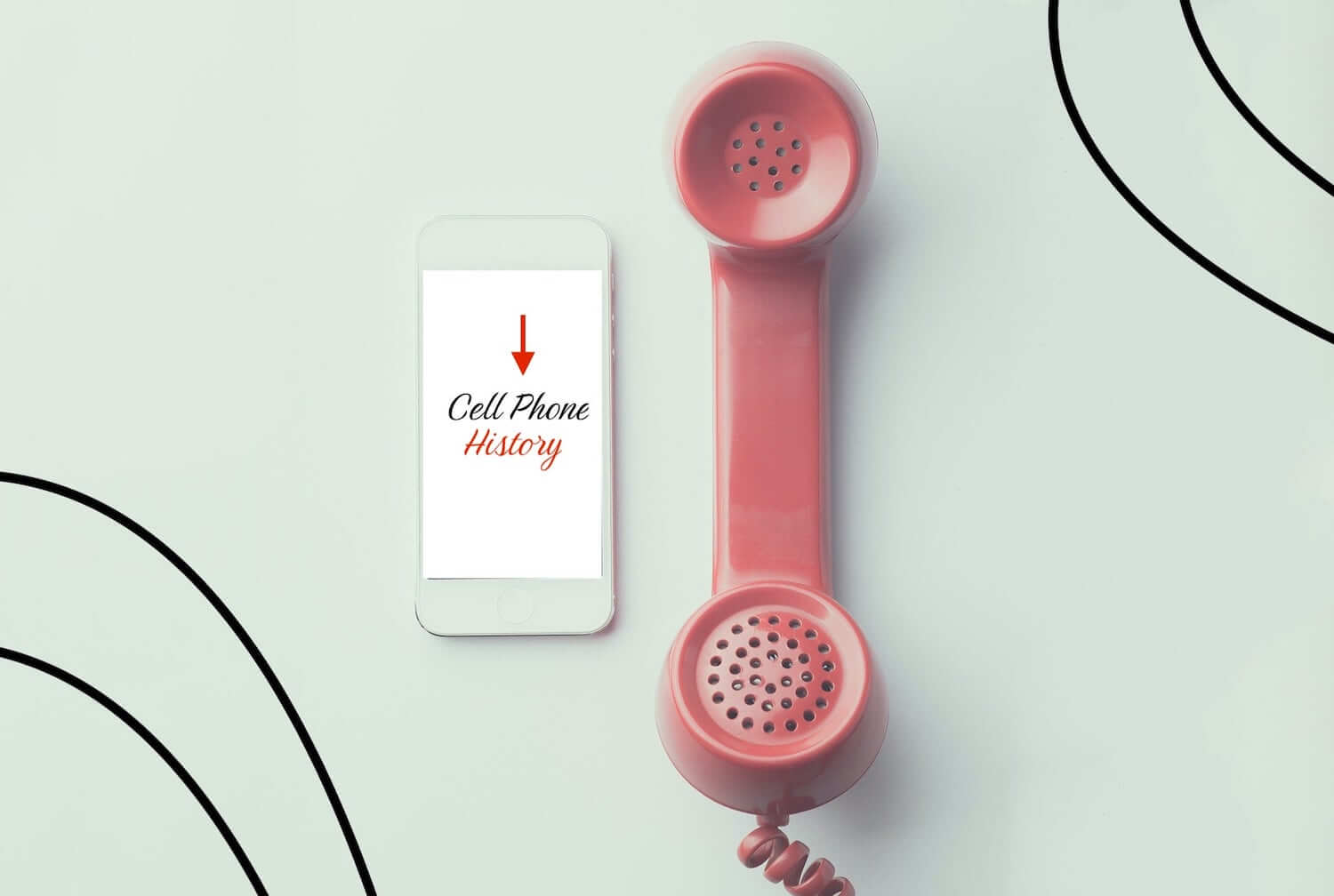Cell phones have undoubtedly taken over the majority of people’s lives. They have become an integral part of this era, and oftentimes, we take all the access to information we have at our fingertips for granted. If you stop and think for a moment, you’ll realize that you rely on your phone for much more than just communication. Although they were originally invented to make communication easier, you now use your cell phone as a tool for many aspects of your life.
We no longer rely solely on the calling and texting features to communicate. We also depend on messaging systems and social media apps to interact and talk with other people. Get ready to learn all about where it all began and the invention of mobile phones.
Telephone History
Telephones are incredible devices that allow us to connect with people worldwide, enabling better communication and saving us so much time. If you ever miss someone who is far away or have a pressing issue to discuss, but can’t wait to see them in person, they are only ever a phone call away. But how did it all begin?
It all started in 1672 when a man named Robert Hooke invented the first acoustic telephone. In movies or cartoons, you may have seen characters who were neighbors use two cans and a piece of string to talk to each other. Although it makes no sense for two people to talk through a piece of string, the first acoustic telephone was similar to this. Robert Hooke discovered that sound could be sent through a wire.
Then we jump to the 1800s when Samuel B. Morse discovered that messages could be sent by pressing/releasing buttons in intervals, transmitting a specific sound pattern. This is what we now know as Morse code. About 20 years later, in 1858, Cyrus Field laid the first transatlantic telephone cable, making telegraph communication possible between England and the US. Ten years later, inspired by Morse code, dots and dashes flashed by signal lamps were used by ships to communicate while out at sea, but the telephone was nowhere in sight until about a decade later.
In 1876, Alexander Graham Bell invented the telephone and later made the first wireless call. In January of 1915, he made the first long-distance phone call using a landline. International phone calls were much more expensive back then, and in 1927, when the first phone service between the US and UK was established, radio phones were used to communicate, costing $10 for only 3 minutes of talk time.
Next came the Iconophone, made by AT&T, which allowed people to see, hear, and reply to each other in real-time. However, this idea wasn’t very successful, and the first public videophone network was set up in Germany not too long after, but its use was extremely limited.
Through the years, other forms of communication via phone were explored, but it wasn’t until 1973 that Martin Cooper made the first cell phone call. It wasn’t very convenient yet, considering the first mobile device took one year to recharge, and the longest you could talk for was half an hour. Then in 1977, the FCC launched the first primary cellular test network in just a few cities.
Mobile Networks
There have been several generations of mobile networks. Read below to learn more about each one:
- 1G: This was the first generation of mobile networks to exist. It first became available in the United States and shortly after in Japan.
- 2G: This network meshed digital signals into cellular networks. The 2G networks first appeared in the late 90s. Back then, the mobile network towers were owned by various companies, so different carriers supported different 2G systems.
- 3G: These networks came about in the early 2000s. 3G systems became famous for being the first systems to support broadband data, which became a must-have for smartphones capable of processing a variety of apps, in addition to basic calling and texting.
- 4G: The speed at which the usage of phones was growing necessitated the development of a better data bandwidth using 4G technology.
- 5G: This is the modern network that we are currently using. Due to the number of people using cell phones nowadays and what they are being used for, a better, faster network is required.
The History of Phone Numbers
Back when the cell phone was first invented, there were only two phones in existence, so Bell didn’t even need a phone number for that call to be possible. However, as more technology was developed, telephone companies became a necessary part of having a working phone, and you also needed to have a telephone number, and area codes then became a concern.
Phone numbers tend to vary in length depending on where you are in the world. But before the phone numbers we use today, there was a special code that determined your phone number. This code was called the alphanumeric code, also known as the 2L-5N system because it consisted of 2 letters and 5 numbers. Next, regional dialing was introduced.
Due to the number of people connecting via phone, phone numbers began to run short, and area codes became necessary. Keep in mind that rotary phones were still being used at that time, so effective dialing was essential. That’s why locations with larger populations received easier-to-dial area codes.
Biggest Cell Phone Carriers in the U.S.

In the United States, a few different cell phone carriers are strong competitors to one another and are popular throughout all 50 states. Learn more about each one below.
- T-Mobile: This phone carrier is the second-largest wireless carrier in the US. It is owned by Deutsche Telekom, and its headquarters are based in Washington. T-Mobile and another well-known phone company, Sprint, merged in early 2020, and T-Mobile is now the sole proprietor of Sprint. T-Mobile has accessible, low-cost phone and data plans, among other perks. They offer 5G nationwide, and they have plans for as low as $35 a month.
- Verizon: This phone company was created in June 2000 through a merger between Bell Atlantic and GTE Corporations, making it one of the most significant mergers in business history. Although some of their best plans are pricier than other phone companies, their network has an excellent reach, and they offer speedy 5G and very good prepaid plans to choose from.
- AT&T: This phone company has important historical origins as the Bell Telephone Company, once Alexander Graham Bell invented the phone. Although Verizon has a larger network, and T-Mobile’s prices are more affordable, AT&T has perks to obtain a plan with their company.
The History of Text Messaging

With the invention of cell phones came the possibility to not only talk on the phone with someone but also to use the same device to communicate without having to speak, instead by typing. Texting is now a common form of communication, and you likely can’t get through the day without receiving or sending a text.
SMS was first created in 1984 by Friedhelm Hillebrand and Bernard Ghillebaert. However, the very first text message was sent in 1992 by Neil Papworth. At first, you could only exchange messages within the same network, but by 1999, that was no longer an issue.
This made texting even more useful because you didn’t have to be on the same network to communicate. Keep in mind that phones didn’t have keyboards when this all happened, so these messages had to be typed on computers. Nokia was the first to manufacture a cell phone with a keyboard.
Although having a keyboard on a phone may seem like something basic, you shouldn’t take it for granted. Think back to the first phones. Each number had designated letters. The number 2 would be used to dial a, b, or c. The number 3 would dial d, e, or f. The number 4 dialed g, h, or i. The number 5 dialed j, k, or l. And so on, allowing you to use the numbers available on the keypad to write messages with their corresponding letters.
However, because several letters are designated to the same number, you would need to press the number a certain number of times to get to the letter you wanted to use. This made it easy to have typos, and it wasn’t very efficient because it took a long time to type even the shortest words.
Nowadays, keyboards are equipped with autocorrect, different language settings, and predictive text. You can even use accents on certain letters or adjust the keyboard size to make it more comfortable for you.
In conclusion
The history of the cell phone starts with the history of the telephone. Without people like Robert Hooke or Samuel Morse, perhaps Alexander Bell could have never invented the telephone. It’s hard to imagine a world without phones. They have become one of the most useful pieces of technology.

